► 2021 Jaguar F-Pace plug-in hybrid review
► 33-mile WLTP range
► New-world tech meets old-world luxury
It’s typical of Jaguar to release its first plug-in hybrid model three years after its first electric car.
The F-Pace hybrid is a sort of halfway house between the present and the future. It’s more traditional than an i-Pace and is certainly appealing for those who don’t want something so radically designed or propelled.
Jaguar wants the F-Pace P400e to offer petrol convenience with electric power. But in reality the electric portion feels a bit like an amuse-bouche designed to titillate your taste buds while leaving you wanting more.
What’s new?
Well the powertrain for one. The P400e features a familiar 296bhp 2.0-litre four-cylinder petrol and a 141bhp electric motor. Combined output is 398bhp because both systems can’t utilise full power at the same time.
Hardly like it’s missing out, with a 0-60mph time of 5.0 seconds. It feels that fast too.
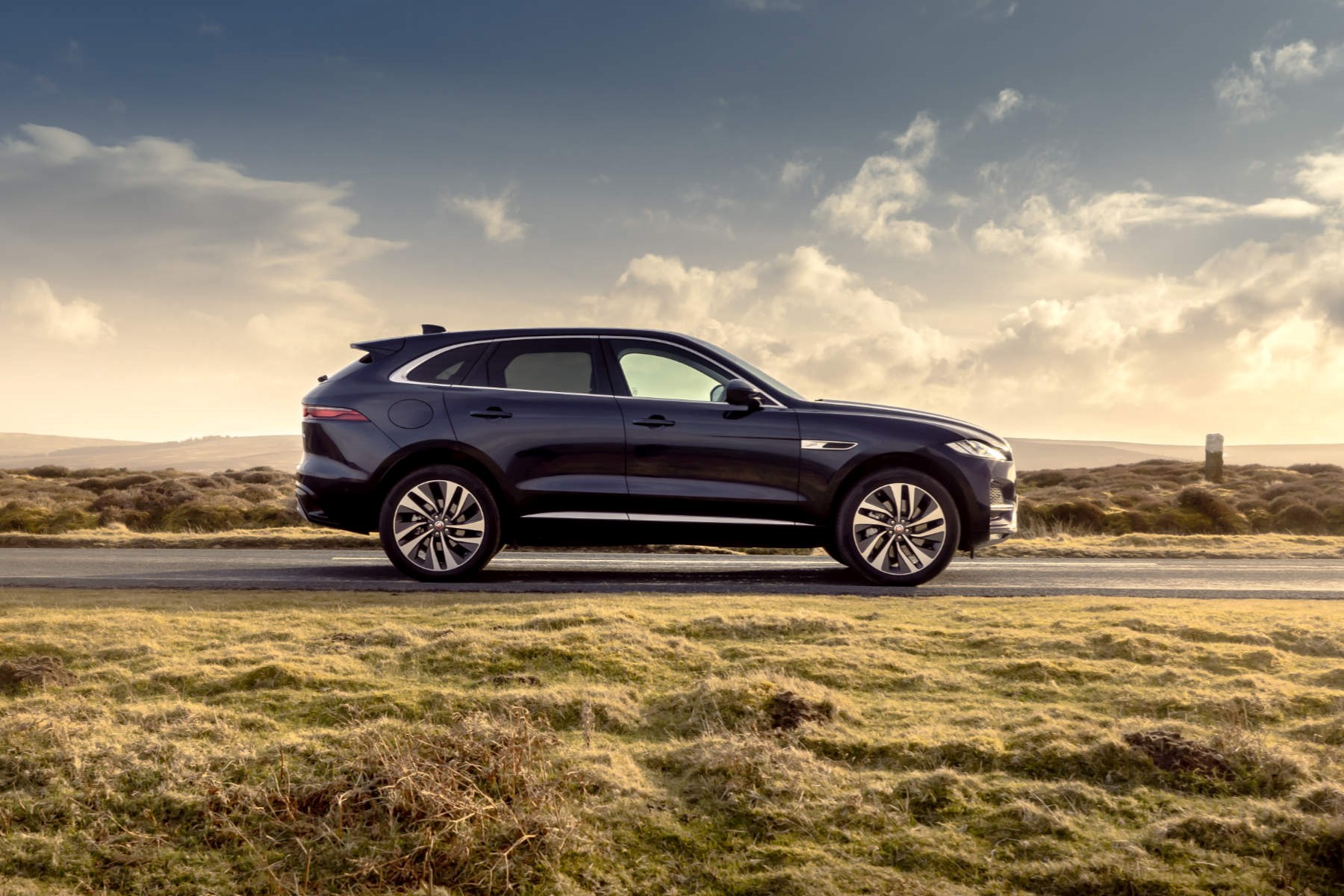
WLTP range is 33 miles (expect more like 25-28) while CO2 emissions measure in at 49g/km.
The 0-80% charging sprint is dispatched in 30 minutes on one of those fast chargers you’ll find at motorway services, or around an hour and 40 minutes from a home charger.
The outside has received a facelift, we promise. Slimmed rear lights and a wider grille are the only things noteworthy.
Owners of the old F-Pace will, however, really notice the difference as soon as they step into a new one.
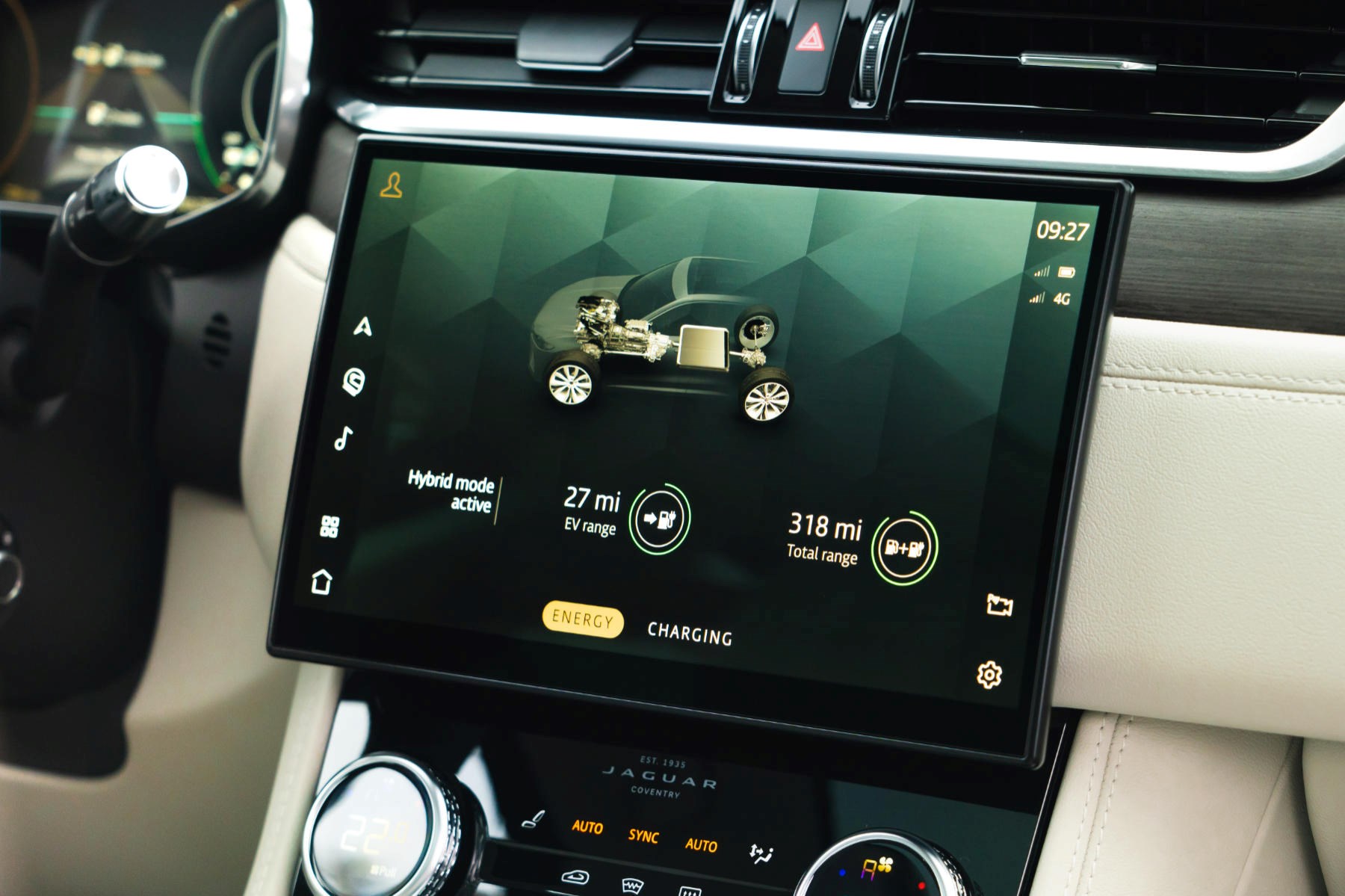
It now has pretty much the same interior as the latest XF. Climate control dials are nicked from the i-Pace, so you’ll need to click the twisty dial to put on some of the finest buttock warmers in the business. Above this is Jaguar’s new 11.4-inch touchscreen.
Tell us more about the interior
Dominating the F-Pace’s interior is that huge screen with Jag’s latest infotainment software. Highlights include over-the-air updates, Apple CarPlay/Android Auto, and the ability to sync two phones at the same time.
Phones are a bit of a talking point for this latest F-Pace. The Pivi software is slick and intuitive to use, assuming you’re part of the smartphone generation.
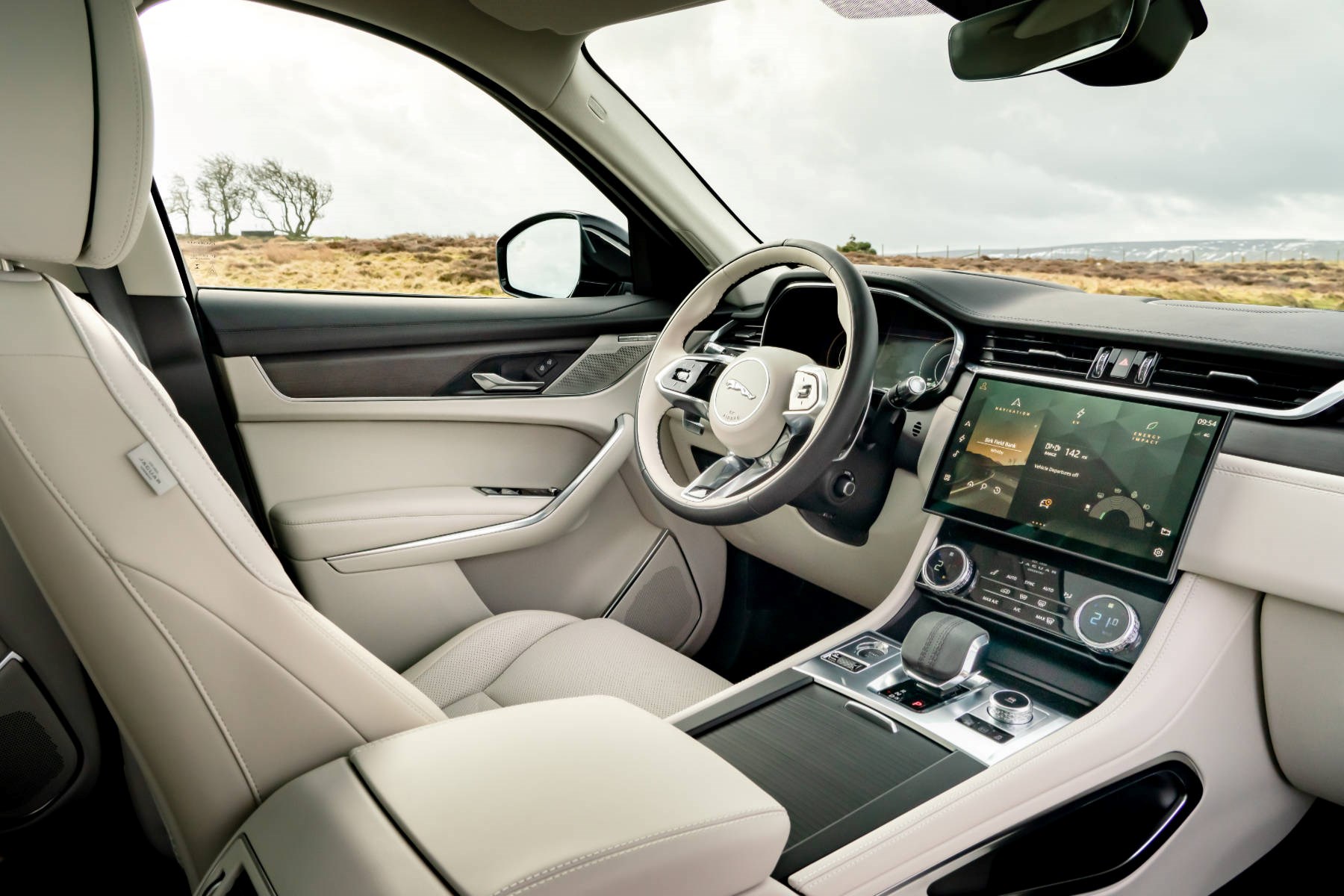
Luckily, even if you’re not, reassuring steadfast Jaguar touches are still prevalent. Old Jag seat colours like Caraway are very much still a thing.
The F-Pace’s headrests are among the softest in the automotive universe too. So soft it takes some getting used to.
What’s it like to drive?
Really good. Integration of the different power sources is smooth and unjarring in most situations.
Brake feedback could do with some finer tuning. It’s often difficult to gauge just how hard you need to press the middle pedal in order to get the amount of stopping power you require.
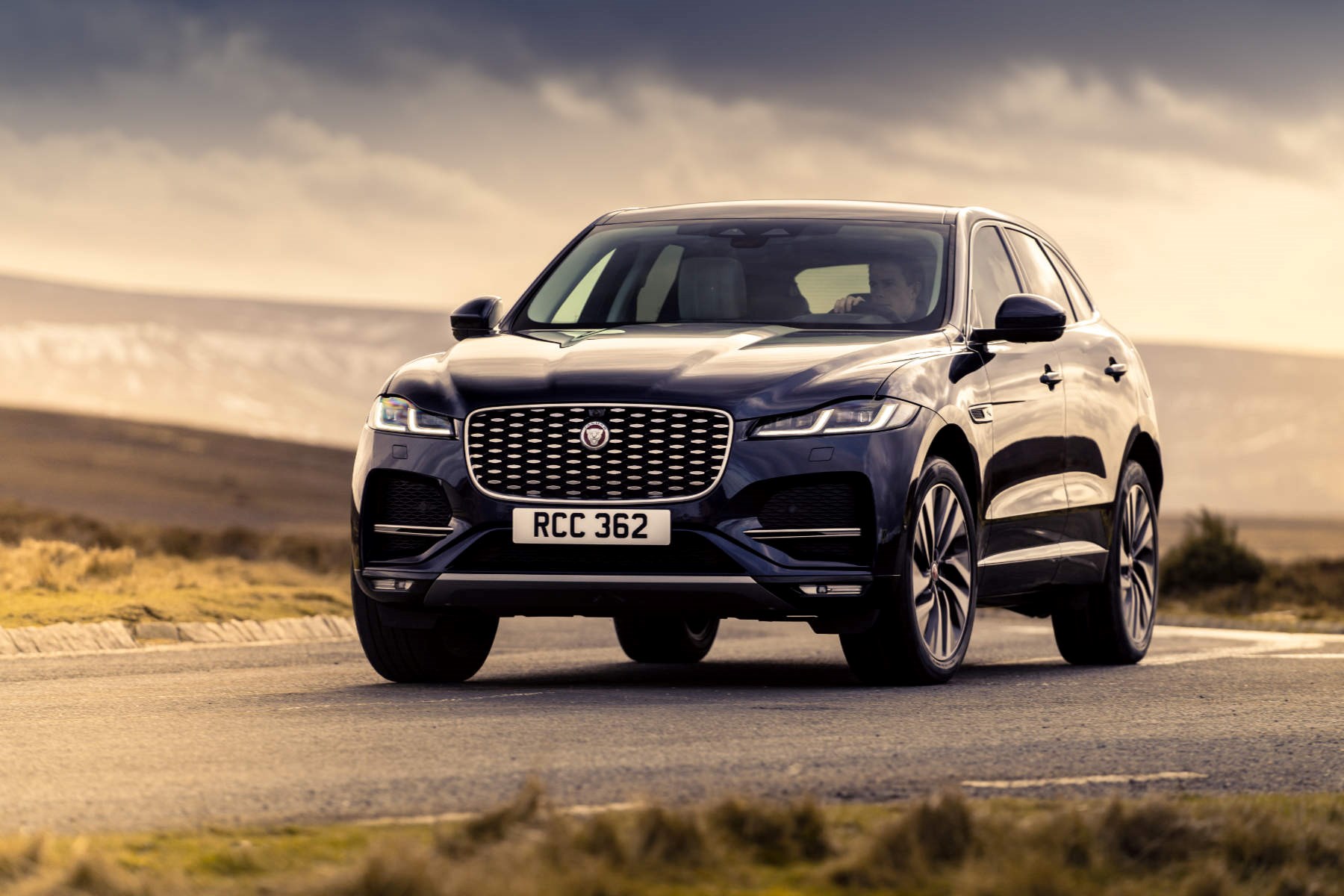
Out on the A and B roads that link towns and villages, surely where Jaguar SUVs will spend a great deal of time, the F-Pace hybrid excels. Considering the size and weight of the thing it treads lightly. Not Lotus lightly, obviously, but not as pothole-inducing as other plug-in hybrid SUVs.
Feedback from the steering wheel depends which driving mode you’re in. But in full-on Dynamic the steering feels brawny, with just enough feedback being delivered to your fingers.
Faux-engine noise is also apparent in this mode. It really doesn’t sound that bad. It’s fed in at a low enough quantity that it never becomes overpowering and therefore it doesn’t sound silly.
The eight-speed ‘box is very hard to trick and responds quickly to paddleshift requests.
We should say here that there is a lap timer available with this plug-in hybrid. Jaguar said that it comes with the software. Why wasn’t it deleted? Just in case someone somewhere wants to hot-lap their PHEV SUV.
What about around town and on the motorway?
Ah the motorway. This is a roaming zone for Jag saloons. But a PHEV SUV is less well suited. For starters, the rate at which you zap power from the battery is exacerbated at high speeds. Plus if you haven’t charged up, you’re trundling up the M1 in a two-tonne SUV powered by a 296bhp petrol engine.
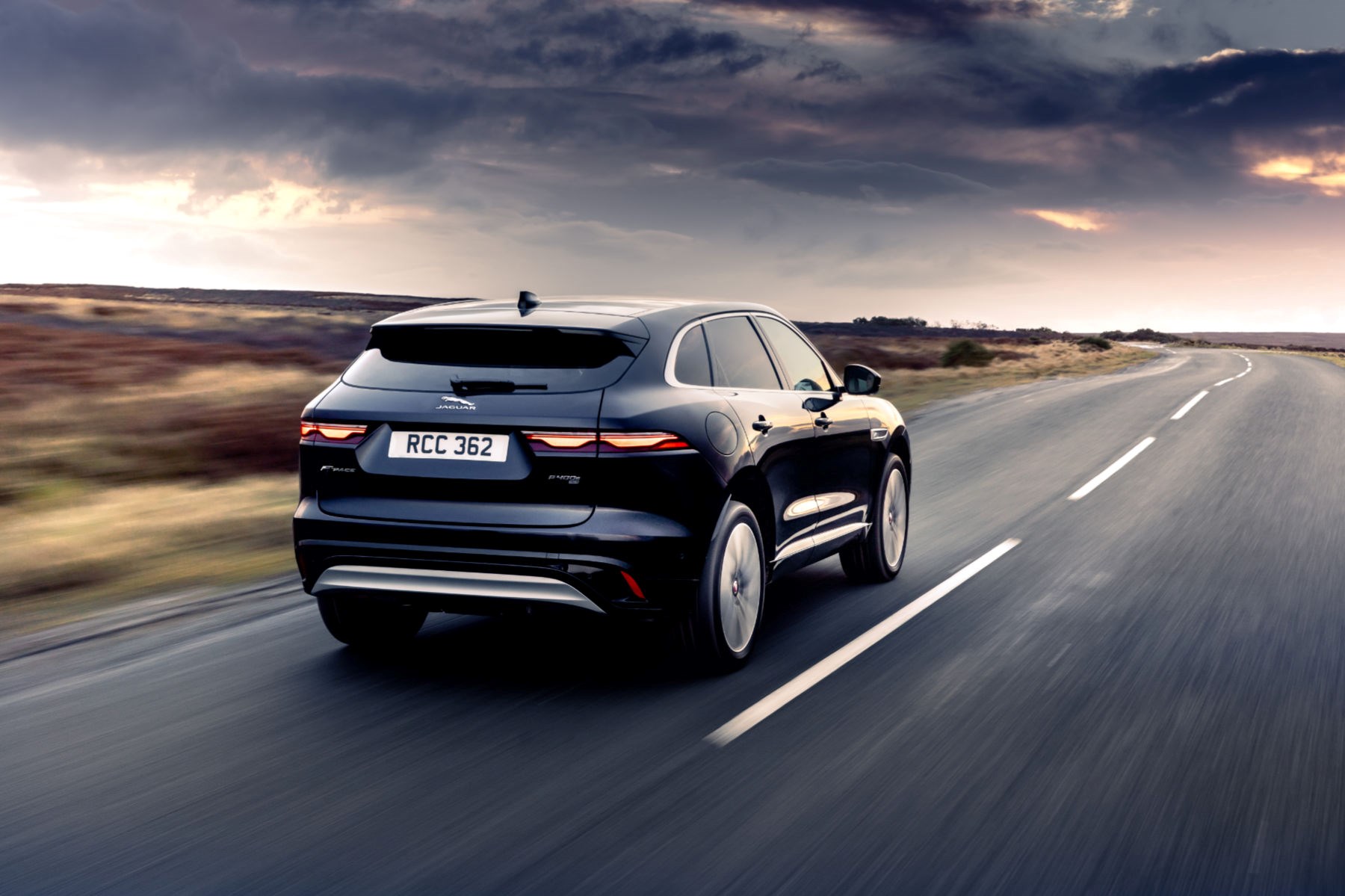
At 70mph the ride is still as plush as you’d expect, but the road noise does creep up. There’s a difference in hubub between 50mph and 70mph that will be perceptible to anyone.
Around town it’s hushed and comfy. There’s an EV-specific button that orders the car to go full-EV, hybrid, or battery-saving. They’re all self-explanatory and unfiddly.
This is Jag’s largest SUV. It’s 2071mm wide with the mirrors folded in, which is about the same width as a Range Rover Sport. Wide, then. Luckily the view out is uncluttered and reversing cameras are on point.
Interestingly you can engage full EV and full Dynamic mode. Odd combo for trying to eke out the battery on the school run…
Jaguar F-Pace plug-in hybrid: verdict
Hushed, fast, and as practical as a big SUV needs to be, with enough of the neat touches that traditional Jaguar owners will appreciate. The F-Pace is easy to like but less easy to recommend.
Or we should say, less easy to recommend for the general buyer. If you really want a big, posh, SUV with electric-only capability but not a reliance on the plug, the F-Pace makes a lot of sense.
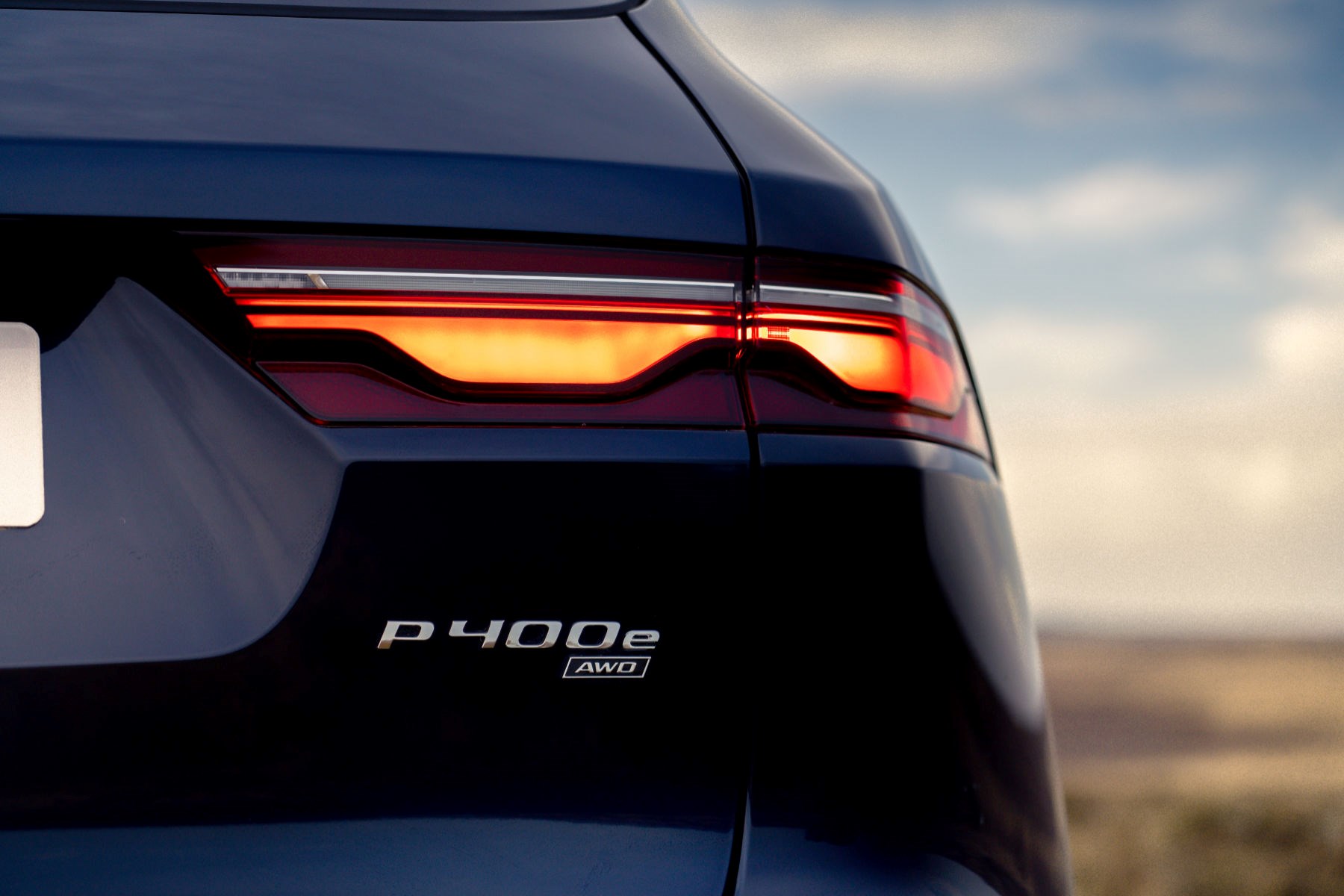
The problem is the Range Rover Velar. This uses the same P400e powertrain, and there’s only a few hundred quid in it with similar finance deals.
The Rover is a bit hipper looking with its lower profile, while the Jag has posher infotainment. It’s a tough choice between the pair.
With our sensible shoes on it’s hard not to offer the advice of just buying a diesel or petrol F-Pace unless you really are convinced a plug-in is for you.
The big problem comes from the Jaguar i-Pace. If you want an SUV with eco credentials and turn of pace… why wouldn’t you choose that?